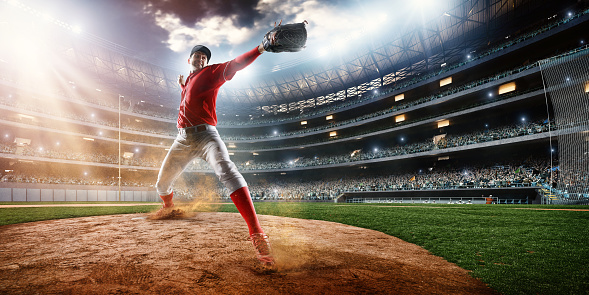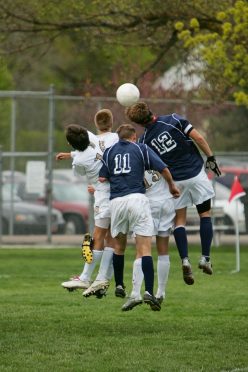First the windup, then the pitch and a small leather ball travels at a largely unprotected baseball player faster than most drive in the high-speed lane.
With baseball pitchers at all levels hurling balls dangerously fast, more batters are being hit and injured than ever before. In mid-May, for example, New York Mets batter Kevin Pillar suffered serious nasal fractures from a 94.5 mph pitch.
Currently, the average fastball reaches home plate at 93.4 mph, the highest rate in 20 years according to Fangraphs, which tracks pitch speeds using radar guns.
Some coaches and fans might see that as peak performance, but it has led to more serious injuries for batters, catchers fielding scorching hurls and even fans in the stands when a pitch goes wild.
“I have seen patients from various levels of baseball participation who were hit by a pitch. These fast pitches most commonly affect catchers when they hit their mask or the batter tips one that hits the catcher. They often cause concussions based on the significant impact from this biomechanical force to the brain,” said Dr. Stephanie Alessi-LaRosa, associate director of the Hartford HealthCare Ayer Neuroscience Institute Sports Neurology Program and program director of its new sports neurology fellowship.
There is a lack of long-term research into the effect being hit by fastballs has on baseball players’ brains, but she did note that Pillar could have suffered worse injuries had the pitch connected elsewhere on his skull.
“Where the ball struck his face, the nose is sort of a ‘crumple zone’ for the brain and can absorb some of the force. I’ve seen it spare athletes from having a concussion, surprisingly enough,” she said.
Batters settle into their stance wearing only helmets as protection against the pitches. Some helmets now offer extensions down the jawline for additional skull coverage. Unfortunately, Dr. Alessi-LaRosa said the equipment protects against skull fractures or penetrating injuries to the brain but not concussions.
“For catchers, I have seen great strides in the helmet technology, particularly with face cages that are spring-loaded and absorb some impact before it reaches the rest of the helmet. This, conceivably, reduces the biomechanical force imparted to the brain,” she explained. “I do recommend these for my patients who are catchers. Jaw protection is most likely to reduce damage to teeth and the jaw bone but not necessarily to the brain.”
From a neurological standpoint, baseball players can be safer at bat if they work on adjusting their swing mechanics to more successfully connect with the faster pitches or if leagues consider moving the pitching mound back to help slow the pitch as it crosses the plate, she added.
“It will likely take rule changes and restructuring positions to make being a batter a bit safer. Equipment can only do so much. The brain is inside the skull, surrounded by fluid, and can move in that fluid regardless of what equipment shields the skull outside the brain,” Dr. Alessi-LaRosa said. “The outer equipment protects the skull and the skull is meant to protect the brain, but that space of fluid between skull and brain remains.”
For information about care for sports-related injuries like concussion, go to https://hartfordhealthcare.org/services/neurosciences/departments-services/sports-neurology.


